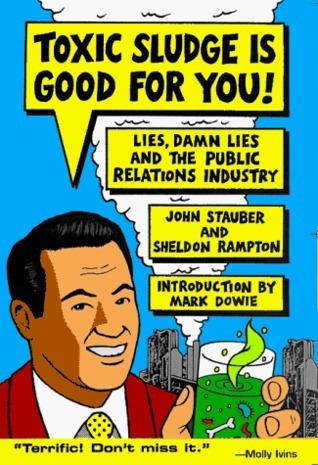Why Sacred Places Should Matter, Even to Business Folks


By Christopher McLeod
In the last month, Native Hawaiians blockaded construction machinery headed for the top of sacred Mauna Kea, where a 30-meter telescope is to be built. Thirty-one people were arrested. In Arizona, members of the San Carlos Apache Tribe walked 45 miles to Oak Flats and occupied a ceremonial initiation site that the U.S. Congress handed over to a London-based mining company for a copper mine. In California, the Winnemem Wintu Tribe continues their fierce opposition to government plans to raise the height of Shasta Dam, which would flood Winnemem sacred sites.
Sacred places are alive in the hearts and minds of native people around the world. Mountains, springs, lakes, rivers, trees, groves, caves — these are sites of ceremony, inspiration and learning. From Mount Fuji to Uluru, from Taos Blue Lake to the Grand Canyon, sacred lands anchor peoples’ souls to earth.
The public relations push to proclaim national parks as “America’s Best Idea” missed an important historic fact: Sacred places are the oldest protected areas on the planet. This is an old idea. Perhaps it has been buried by monotheistic Christian ideals that instruct man to dominate nature, or capitalist market values that dictate extraction and profit off land that is bought and sold. But long before there was a “protected area movement” to counter environmental threats, there were culturally protected places on every continent. And there still are.
Sacred lands are more than esoteric, spiritual sanctuaries. These places protect biodiversity. The World Bank reports* that indigenous people make up 4 percent of the world’s population and control 22 percent of the earth’s surface — and on that land is 80 percent of the planet’s remaining biodiversity. People whose connection to land goes back centuries and who have maintained cultural value systems rooted in sacred places have a superior land ethic. Period.
Over the last 10 years, I have traveled around the world documenting the uniqueness of indigenous cultures and the universality of values that honor the sacred spiritual dimension of land and water. Reciprocity. Reverence. Respect. Relationship. Yet everywhere I go, aboriginal lands are under siege, as new technology and energy addictions push corporations into more and more remote places to satisfy global demand.
The resulting film series, "Standing on Sacred Ground," shows Altaians in Central Asia fighting Russia and China’s plan to build a natural gas pipeline across a sacred burial ground on the Ukok Plateau, a World Heritage site. In Alberta, Canada, First Nations people suffer an epidemic of cancer, pull deformed fish from rivers and lakes, yet face a government that is totally supportive of a tar sands industry it helped create. In Peru, the Q’eros make pilgrimage to sacred mountains, their apus, but see glaciers — their water source — disappearing before their eyes as far-off carbon emissions warm the Andes.
Sacred places are important to hundreds of cultures that have suffered at the hands of missionaries who have warned them of their sins—including veneration of nature. As Winona LaDuke says in the film, “Sacred places are spiritual recharge areas, places of reverence where we are not only careful, but prayerful. In those places we reaffirm our relationship to our relatives, to spiritual beings, and to the land that is the source of our power.”
Ceremony, prayer and ritual still connect families and communities to land in a bond of love, affection and spiritual obligation. It’s what many in urban industrial civilization now crave. Sacred places should be at the heart of every region’s sustainability plan for the future, with indigenous people leading the way to create a new economic model and a new land ethic that can help heal our alienation from nature.
The tipping point that will signal the transition back to honoring land as sacred could come with the denial of the Keystone XL pipeline, and not just because it is a climate killer that threatens the Ogallala Aquifer. Keystone should be denied because it is dirty oil destined for the U.S. that is killing people, wildlife, rivers and forests in Alberta. It is unethical, immoral oil. It’s a violation of all that is sacred.
Davianna McGregor is one of a band of Native Hawaiians who created the Protect Kaho`olawe Ohana in the 1970s and successfully won a sacred island back from the U.S. Navy, which had used Kaho`olawe as a bomb testing range for 50 years. McGregor says, “Christianity severed the relationship of our soul to the land. Kaho`olawe gave us a connection to our ancestors and spiritual beliefs, and we were able to call back our gods.”
In addition to legal protection for sacred places, what we need is an apology, from the U.S. government to Native Americans and indigenous people elsewhere whose lands have been violated. We need reconciliation between cultures and with the land. This could unleash a cultural renaissance for indigenous people, and also for western civilization, painfully disconnected from nature but fully capable of remembering we are part of it, not superior to it.
Christopher “Toby” McLeod directs the Sacred Land Film Project. His most recent film series, the award-winning Standing on Sacred Ground, tells the stories of eight embattled indigenous communities around the world. It is now airing on public television stations around the country. Read more at StandingOnSacredGround.org or check out the trailer.
Why We Should Teach Everyone Character


By Shannon Houde
An organization in the U.S. is teaching kids character. Yes, really. They've developed an educational framework for schools that supports the "social, emotional and ethical development of students." Or, as Daniel Goleman would term it: emotional intelligence. Now that’s just core character if I have ever heard it!
Sounds odd though, right? When I was at school the idea of teaching character would have been laughed out of the classroom. Character was something that we were expected to acquire over time and accrue somewhere between the rocks and hard places of life. Challenging life experiences were 'character building.' The message was clear: You had to earn it. Blood, sweat and tears. My parents sent me into the woods for a month when I was 16 to toughen me up, and just the stench of 30 teenagers in small tents with no shower for that long gave me a kick in the character pants. I keep saying I want both my boys to be in the military like my Navy dad, so they too learn character.
So, when I saw this article, I was intrigued by the idea that someone was trying to formally teach it in schools and curious about the potential applications for my career coaching clients and the sustainability sector as a whole. Maybe these guys were on to something. I'm a executive coach and talent advisor, and I spend a lot of time analyzing the concept of leadership: what it is, how to cultivate it, how to mentor it, how to hire it, how to work with it, and how to use it to push sustainability and innovation forward. I was already convinced that good character is a cornerstone of great leadership and that great leadership is a cornerstone of better -- and more sustainable -- business. What's more, I already knew that in the sustainability jobs market, the hallmarks of good character -- authenticity, integrity, accountability and a commitment to walking the talk -- are at a premium. So, the question followed quite easily: If you can teach character to children, can you teach it to our future leaders, too?
Much like sustainability itself, character is a heterogeneous concept that's hard to define in any tangible way. For the purposes of this post, I'm thinking about the role an educational framework might play in equipping the next generation of leaders with the key competencies they'll need to deliver the sustainability agenda. Certainly worth more than geometry class, no? In my experience from working with more than 3,000 sustainability practitioners over the past decade, I have found that the top five key competencies for sustainability are:
- Bravery and resilience
- Ability to balance global and local perspectives
- Innovative- and systems-thinking
- Influencing and negotiating
- Engaging others on the journey on their own terms
Social, emotional and ethical development -- to quote Character.org -- is the bedrock of the soft skills that underlie these competencies, and that makes teaching character a no-brainer.
But how? There are a couple of routes worth exploring such as a professional mentoring relationships in which -- as this Forbes article explains – “self-aware, patient and empathic people with strong listening skills who are committed to using their strategic insight, technical expertise and industry knowledge can contribute to a junior's personal growth and professional development." The downside is that it's on a one-to-one basis and so by its nature is not available to everyone.
Another is Business in the Community's competency map: a useful online tool that uses interpersonal, personal and organizational themes to break down the skills, values and traits needed for strong sustainability leadership. The behaviors described in it could be considered the professional hallmarks of good character. I've admired this framework before and found it useful to help the jobseekers I work with to clarify their thinking around what makes a great leader. But looking at it now, I think it's missing something: an outer ring, going the whole way around, with just one word in it (I'll let you guess what...).
Competency maps help us conceptualize the challenge of embedding good character traits in the workplace, and mentoring relationships can give a small percentage of elite future leaders bespoke one-on-one coaching -- but maybe that's not enough. Maybe what we need is a formalized, across-the-board, open access professional development offering for businesses what Character.org is doing for schools and communities. What kind of an impact would that sort of education and support have on the delivery of sustainability goals and our developing future leaders?
According to the director of the Institute for Leadership and Sustainability at the University of Cumbria Business School, Jem Bendell: "Leadership should be about helping people do difficult things together that they wouldn’t otherwise do, so sustainability leadership is a useful term when talking of helping society transition to a totally different way of life.”
From this perspective, we all need to be sustainability leaders -- whether we have a C-suite role or not. He says: "Just because you don’t have a position of power does not mean you can’t change things." I say: Good character will be what makes us try. So, let's teach it.
If you are interested in leadership coaching, executive coaching or character training please contact us.
Image credit: Taigo, via Flickr
Shannon Houde is founder of Walk of Life Consulting, the first international career and executive coaching business focused solely on the environmental, sustainability and corporate responsibility fields.
Unilever hits new carbon saving milestone


Reporting only two weeks ago that its 'sustainable' brands like Dove are growing twice as fast as its 'regular' brands, Unilever has now revealed that it has reached a new milestone of 1m tonnes of CO2 savings since 2008 in its manufacturing network.
The FMCG giant says that energy consumption has been reduced by 20% - the same energy used to run 40 factories or the equivalent in carbon of over 800,000 acres of forest in one year and this has also resulted in significant cost savings of €244m.
Commenting, Unilever chief supply chain officer, Pier Luigi Sigismondi said: “Across our supply chain we are increasingly turning to energy provided by wind, solar and biomass, converting heat from our manufacturing processes into power for our factories. We are on track to reach our target of 40% renewable energy by 2020.
“Climate change is having a huge impact on the environment and on business. Ahead of Climate Week in Paris, we are continuing to show that sustainability is a driver for growth, and the only long-term option for business in a volatile world.”
Savings in CO2 have been delivered by a global strategy, including circular economy approaches. For example in South Africa, a bi-product of the seed oil from Flora, Stork, Rama and Rondo is used as a fuel in the boilers to deliver energy back into the factory.
Unilever has a target to reach 40% renewable energy by 2020 and has recently joined the RE100 campaign to accelerate the scale-up of renewable power to create a healthier and more sustainable environment. The goal of RE100 is for at least 100 of the world’s most influential businesses to join the campaign and commit to going 100% renewable for electricity.
Removing the Stigma Faced by 'Girls' Who Code


“The pool of applicants would have been twice as big had there been an equal number of women in the field ... By shutting girls out of computer science classes early on, we are limiting the number of people going into the field and hurting businesses that need that talent,” said Lida Zlatic, founder of ClassTracks. When her company was looking for a junior developer to join the team, they struggled to find qualified applicants (male or female).
The numbers are dismal. Girls Who Code’s West Coast director, Salleha Chaudhry, cites recent data that shows that 74 percent of girls in high school report an interest in STEM (science, technology, engineering and math), but only 4 percent choose to major in STEM subjects in college. While 37 percent of women majored in computer science degrees in 1984, just 18 percent graduated with a computer science degree in 2012. Of those who do receive a degree in computer science, only 20.6 percent get a job in a STEM field. By 2020, Chaudhry reports, there will be 1.4 million technology jobs that need to be filled, and not nearly enough applicants to fill them.
Although these statistics are grim -- and recent news stories seem only to focus on the sexism and discrimination found in male-dominated, STEM workplaces -- many women have found fulfillment in computer science and see a brighter future.
Why should girls pursue computer science?
In addition to increasing the number of qualified applicants for jobs, pursuing STEM careers provides more stability for women, according to Play Works Studio founder, Adriana Moscatelli.
“Women with STEM jobs earn 33 percent more than women with non-STEM jobs," Moscatelli said. "Purely from a practical perspective, one can say that women who pursue careers in science and math fields have better career prospects.”
In addition to better pay, the pay gap between women and men is smaller in STEM jobs. Jobs in computer programming are growing twice as fast as the national average job growth. Women who pursue these jobs will have better job prospects.
Why girls?
Does gender really make a difference? Is it important to bring females into STEM, or just more people? Do girls bring something unique to computer science? Kim Vermeer, a front- and back-end developer with Bynder, feels that gender isn’t important, and an emphasis on pushing girls specifically toward STEM careers is the wrong way to go. “It actually isn’t important for women to pursue jobs in computer science. We don’t do things differently … Girls shouldn’t be ‘forced’ to work in this industry. Society can show everyone how fun computer science can be, whether you are a girl or a boy.”
Overwhelmingly, though, the consensus is that women do, indeed, bring something to the (computer) table.
Taylor Murray, lead developer for Call Tools, has noticed a difference between the lone female Web developer on his team, and his male team members. “She works more in a thoughtful way. She codes in a way where it is almost like she is thinking of the problems we are going to encounter. There is a sensibility to her that I don’t encounter with male coders. It is a pleasure to work with someone with these characteristics. I wish there were more girls in the Web development world.”
Dr. Nicki Washington, an African-American woman with a Ph.D in computer science, believes that “girls can bring more creativity and collaboration to projects.” She has observed that they are also the stronger students in her middle-school courses, but they need to be encouraged to speak up and share their ideas. "The first few times, some are shy and hesitant to speak out. However, within a matter of a few months, I've witnessed the confidence levels build tremendously, and most of them take on leadership roles in the class."
And, just as when the conversation turns to the importance of diversity and women’s perspective in the boardroom and the C-suite, it is critical in STEM, as well.
Moscatelli said: “As in any field, having diversity of opinions and perspectives brings innovation and produces better products, services and solutions that would otherwise not be possible.”
Changing perception
In some form or another, many agree that tech fields, especially computer science, have a perception problem. Sarah Gray, a software engineer at PromptWorks, is not the only woman to cast a different light on computer science. “Computer science is a social and creative pursuit, but it has this stigma of being a dry and technical task.” While many think of "geeky" boys at the mention of computer science and coding, several women described coding as creative, challenging and rewarding. Changing the perception of tech, making it more interesting and relevant to everyday life, and highlighting its reach into many aspects of life would go a long way toward overcoming one of the biggest obstacles to attracting both boys and girls to computer science.
Adriana Herrera, founder of Grand Intent, said: “Women should pursue jobs in computer science if they are attracted to industries that are constantly evolving and there is always something new to learn. Additionally, computer science allows the flexibility to touch any ‘subject’ because everything is online and needs some sort of Web application (finance, fashion, sustainability, gaming, etc.). Women who want to leave the door open to a number of opportunities should pursue computer science.”
Sarah Franklin, senior director of developer marketing at Salesforce, and Hemma Prafullchandra, chief technology officer and senior VP of products at HyTrust, agreed with Herrera.
Prafullchandra said, "Computer science and information technology are becoming integral to our way of life. There are very few jobs that don't involve some use of information technology. As such, women should pursue this field as they can fundamentally shape how we live as a society and how the next generation can leverage and benefit from all the innovations."
Franklin of Salesforce went further.
“Technology is shaping our world and our future. And it has never been more accessible. Technical careers have evolved from being something that is necessary and logical to being something that is accessible, creative and stimulating. Women have a perspective that is not just about making the world more productive with technology, but about making the world a better place with technology.”
This perspective is much-needed in a world fraught with the dangers of climate change, rising oceans, worsening storms and growing inequality.
Encouragement and support
If we can change perception, how else can we encourage girls to become interested in computer science? Recurring suggestions included earlier exposure to computer science (beginning in middle school), strong role models and mentors, and positive media depictions of women’s accomplishments in tech, along with support and encouragement.
Dr. Nicki Washington grew up with a math-major mom who worked at IBM in the 1980s, so she was exposed to not only a strong role model in a tech field at an early age, but she also saw all the trials her mom encountered and felt she was better prepared to deal with them when she entered the tech world.
Herrera of Grand Intent underscored the positive aspect and accomplishments of women in tech. "Girls need role models to look up to. Society can push these women and their stories forward so girls have examples they can identify with."
There are several organizations that are focusing on exposing girls and women to coding, encouraging their interest, and supporting their curiosity and problem-solving skills.
Girls Who Code, Women Who Code, Black Girls Code, Geek Girls Academy and Ladies Learning Code are just some of the groups whose popularity is growing exponentially. Girls Who Code has more than 200 clubs nationally and is committed to supporting girls not just during their program, but all the way until they take a job in tech. Women Who Code has a membership of over 25,000 and a presence in 15 countries around the globe. Black Girls Code teaches girls from underrepresented communities about computer programming and technology.
Traditional education outlets are also seeing the importance of technology awareness and skills.
In 2013, Beaver Country Day School became the first school in the U.S. to incorporate coding into all of its subjects. This type of level playing field for both boys and girls could certainly go a long way toward changing perception, exploring the scope of tech in numerous subjects, making tech relevant every day and effecting widespread change.
And, maybe all this effort is paying off.
Several women had stories of discrimination, discouragement and alienation, but a few reported no such issues. Most recently, Emily, a senior at Evergreen School District in Vancouver, Washington, recounted no negativity in her experience so far. "To be honest, I haven't encountered any obstacles. Everyone in my life, from my parents to my teachers to my friends, has been very supportive of my studies and goals."
It is never too late to embrace tech. Nicole Rose, senior applications engineer at Lyons Consulting Group, is a self-taught developer with a degree in music.
“I always think that once a woman gets a taste of the strength that being involved in tech gives you, there starts a journey toward freedom and a sense of self-mastery in one’s life like no other.”
Image credit: Wolfgang Lonien/Flickr
Collaborative Conservation: Taking the Lead on Climate Resilience


This article is part of a series on “The ROI of Sustainability,” written with the support of MeterHero. MeterHero helps companies and organizations offset their water and energy footprints through consumer engagement. To follow along with the rest of the series, click here.
By McGee Young
As we confront the fact that we’ve long since surpassed greenhouse gas concentrations that will irrevocably change the climate, we have to ask: What can “sustainability” achieve for future generations at this point? How will business lead on critical environmental issues in the coming decades?
Faced with the sobering reality that we will not be able to engineer our way back into ecological balance -- the scale is too vast and the costs are too prohibitive – our conversation must shift to how we become more resilient in the face of climate instability.
My overriding hope is that we will minimize the effects of climate change and support each other in the wake of inevitable ecological hardships. The truest test of our humanity will come when competition for scarce resources is greatest.
In the nearer term, our best progress will come from re-imagining how we manage energy and water. Soon, our houses will be capable of consistently producing more energy than they use. This electricity will replace fossil fuel-sourced energy in our communities, and it will transform how we view our utilities.
We may continue to harvest water from rivers, lakes and aquifers, but our water reclamation and reuse infrastructure will drastically reduce the volume of fresh water needed to support our communities.
In our homes, our battery storage units will communicate with the grid and learn the patterns of our daily lives to find the right time to recharge. We will be able to use blockchain transactions to purchase energy directly from our neighborhood school, with its large solar array, earning extra revenue for our kids’ science programs.
On the way to these technological breakthroughs, we must change how we invest in water and energy conservation. The promise of a lower utility bill is simply insufficient to move the needle. As long as our water and energy utilities maintain monopoly control over the value of these resources, we will fail to address the root causes of global warming and water scarcity.
We need a framework for collaborative conservation, which means we have to treat conservation as more than a sacrifice. We must treat conservation and ecological sustainability as valuable in its own right.
In our resilient future, companies will be leaders because their survival will depend on it. The modern economy is utterly dependent on efficient resource allocations. To borrow a line, “no water, no beer!”
How can companies take action?
What kind of leadership should companies show? First, they should do more of what they are already doing by becoming as efficient as possible in their operations, in their supply chains and in their downstream markets.
Second, companies should make investments in onsite production of renewable energy and water reclamation and reuse. The less reliant on traditional utility infrastructure they are, the more resilient they will be in the face of disruption.
Third, and most important, companies must invest in the sustainability efforts of their customers. A few companies have taken steps in this direction. Levi’s encouragement to wash blue jeans less frequently is a great example. But this is a baby step. The real change will happen when companies become buyers of sustainability, not just sellers of sustainable products.
The Bonneville Environment Foundation is a good example of how such investments might work. There, companies can purchase shares in watershed restoration projects, carbon offsets and renewable energy certificates, and offset some of their own consumption with the savings that are achieved by the projects.
But we need to take this good idea one step further. What if companies started purchasing conservation offsets directly from their customers and their communities? Savings elsewhere in the community could offset every gallon, kilowatt-hour and therm used by a company. This is true net-zero. And by purchasing the savings (as opposed to relying on altruistic behavior), companies will spur investment into greater water and energy efficiency in their communities.
These types of programs could take several forms. Companies could directly fund water and energy efficiency projects in schools, nonprofits and other community centers. They could fund conservation rebates through MeterHero, so that their brand would receive greater recognition across the community. Or they could invest in employee engagement, along the lines of what Cool Choices does.
Under any scenario, the payoff is measurable across the triple bottom line. The environment benefits from a lower carbon footprint and greater water security. The community benefits from access to greater funding for energy and water conservation.
Ultimately, however, the greatest payoff is for the companies themselves. Across all demographics, when a company proves itself committed to sustainability, customers are more loyal and more vocal in support of that company’s actions. The successful companies of the future will be the ones who invest in that future today.
Image credit: McGee Young
McGee Young is founder and CEO of MeterHero, a water and energy conservation platform. MeterHero allows companies to fund conservation rebates that consumers earn as they reduce their water and energy consumption. McGee was a winner of the Midwest Social Innovation Prize, a finalist in the Clean Energy Challenge, and his company was selected for the charter class of startups in the Global Freshwater Seed Accelerator. Prior to MeterHero, McGee founded H2Oscore, while also serving as an Associate Professor of Political Science at Marquette University. He is the author of "Developing Interests: Organizational Change and the Politics of Advocacy."
Renewable Energy Could Be the Key to Emergency Aid in Nepal


Editor's Note: This post originally appeared on Unreasonable.is.
By Nate Beard
Nearly 90 percent of the population in Kathmandu and its neighboring communities don’t have access to health clinics, schools, storefronts and housing, according to United Nations reports.
Medical workers, rescue teams, food, water, shelter and telecommunications are No. 1 concerns at the moment, but as time goes on, the U.N. also warns of impending security and communication concerns that could exacerbate those needs, as hundreds of thousands of families are displaced without power. The need for energy to provide lighting at night, charges for cell phones to contact loved ones, and coordinate relief efforts and logistics couldn’t be greater.
Because Nepalese locals and relief groups need reliable energy sources, Greenlight Planet is teaming up with World Vision to bring light and energy to thousands in Nepal.
“A large number of people lose their homes, and even if they have a home, a significant number lose power,” explains Suvodeep Das, director of marketing at Greenlight Planet — a company that provides solar energy and lighting for rural communities. “So, they need these lights for basic needs. For instance, going out at night because all of the toilets are outside.” No lighting at night also puts women in danger of gender-based violence and human trafficking, according to the U.N. report.
Humanitarian groups need easily-deployed, clean and reliable energy to operate where there is little to no infrastructure. “What is also really important is that a lot of people have loved ones, family, friends and relatives who live somewhere else, and there’s no way to get in touch with them because cell phones can’t be charged,” says Das, recognizing that cell phones are being used for more than logistical and rescue purposes inside the disaster. Cell phone and Internet companies are offering services for free or at a discount to support concerned families and stakeholders on a global level.
Das explains that relief workers are often the first to use Greenlight's Sun King (pictured above) — a solar-powered lantern with a mobile phone charger — in disaster responses, because their main concerns are first-order needs, like food and water, then blankets and shelter. So, in order to give solar energy to locals in the area, the company partnered with World Vision to create a Help Power Nepal crowdfunding campaign that uses 100 percent of the funds raised to give solar lights to families in need.
“We’re putting our logistical muscle in the region to work to get these to relief workers at World Vision efficiently and quickly,” says Anish Thakkar, CEO of Greenlight. “And they’ll ensure donated lights get to families in need on the ground.” Greenlight Planet is partnered with U.N., MFI and other NGOs and governments around the world, ranking in the top 10 percent of social businesses with a five-star rating from the Global Impact Investing Rating System (GIIRS) and two B Corp awards.
“We’re raising funds here. My hope is to raise $100K but we need to cross our $30K goal in the next week or so to make that happen.”
Image credit: Greenlight Planet
Nate is the producer and editor of content for UNREASONABLE.is and is dedicated to empowering those around him with information and resources.
Following the Money in the Amtrak Tragedy


By Joseph Plummer
An Amtrak train derailed last week in Pennsylvania, which triggered a set of questions that are not often associated with tragedy. Questions like “Is Amtrak underfunded?” and “Could technology have prevented the crash?” seem out of left field. But given the times we live in, and the current state of politics in Washington, these questions seem more legitimate.
Even if there hadn’t been a tragedy last week, these questions are legitimate, and they deserve some discussion. Can technology prevent tragedy?
I think this is a great question that social entrepreneurs and innovators should continue to ask themselves every day. This is also a question for our policymakers. We can extrapolate and ask: If we invest more in technology, can we reduce the number of tragedies and deaths?
And, tragedies and deaths are not our only concern. We also care about things like quality of life, convenience and long-term costs. All of these things can be affected positively by investments in technology. However, as a percentage of GDP, our investments in research and development, at least in the federal government, have gone down significantly over the past five years.
This prompts questions about funding such initiatives. The question asked last week about the state of Amtrak’s funding is a question that should be welcomed at any time, but most importantly after a tragedy occurs.
Congressman Bill Shuster responded to the question about the state of Amtrak’s funding by saying, “What I believe is this action did not have anything to do with money — it had to do with a failure on either the operator's fault or the equipment's fault.” That is a fair assumption of any tragedy. The direct cause of the event was undoubtedly a failure of the operator and/or the technology. However, the logical question that follows Congressman Shuster’s response is: Would better funding have allowed Amtrak to upgrade the equipment and train the operator better? And, the next question that comes to mind is: What is the optimal level of funding for Amtrak, where the risk of tragedy is virtually zero because of state-of-the-art equipment and exhaustive operator training? This is the question we need to be asking.
Milton Friedman once said, “Most economic fallacies derive from the tendency to assume that there is a fixed pie, that one party can only gain at the expense of another.” It is no mystery why we haven’t asked the right questions. It is because our budgets have become combative. Washington has adopted the mentality that in order for one budget to increase, another has to decrease.
Logically, given the constraint of the federal government’s tax revenue, this line of thinking is understandable, but primitive. We need to consider how much money needs to exist to operate and maintain our society. We need to consider how much money is necessary to maintain a quality of life. We need to consider how much money is necessary for us to minimize tragedy. If we make these considerations, we will likely come to the conclusion that our money supply has not been optimized.
In my humble opinion, there is some optimal level of money supply where the right kind of capitalism, reasonable taxes, and society’s propensity to give effectively fund things like infrastructure, education, healthcare, and poverty alleviation. The high-level macro question we should be asking is: How much money should exist?
In a conversation with a friend about this, I proposed this line of questioning. He eloquently suggested that: “… The main feature of money is that it is used in transactions and negotiations, which as far as we know are uniquely complicated with human beings. So, money is just a small piece of the big picture. Some people have written lately that the evolutionary reason we have language is to do negotiations. So, a theory that doesn’t include negotiation at the heart of it will be incomplete.” Negotiations are all about give and take. Apparently, we have reached a point in Congress where Republicans and Democrats are simply not willing to negotiate. Gridlock.
It is bizarre that the idea of increasing the money supply has not been talked about more. With the exception of discussions about QE3 and QE4, there have been very few discussions about optimizing the money supply. And, quantitative easement hasn’t really proven itself as an effective mechanism in increasing the supply of money for public infrastructure. Increasing the money supply could give Congress the wiggle room necessary to begin collaborating again. And, perhaps this collaboration could lead to a better-funded Amtrak, but more importantly -- a more vibrant and sustainable economy.
Image credits: 1) Flickr/John H. Gray 2) American Association for the Advancement of Science
Joseph Plummer is a degree candidate in the Executive Master of Natural Resources (XMNR) program at Virginia Tech, expecting to graduate in May 2016. He currently works for a non-profit organization that works with schools and schools districts on renewable energy and sustainability initiatives.
The Green Sports Movement’s Next Horizon: Game-Day Food


Editor’s Note: This post is part of a student blogging series on The Business Of Sports & Sustainability. Students attend the Presidio Graduate School which offers the only MBA-level sustainability program focused exclusively on the sports industry. You can follow the series here.
By Gabriel Krenza
Sports entertainment and game-day fare have been inextricably linked since the inception of organized competition. Ancient murals of the Olympic games depict Mediterranean audiences feasting on lavish arrays of exotic cuisine. Today, the Super Bowl is the most widely watched event in the country. One in every three Americans tuned in to watch the event. It should come as no surprise that it also stands as one the largest days of food consumption in the United States -- second only to Thanksgiving.
Sports fandom and viewership transcends generational differences, political boundaries and even social classes. It’s a phenomenon that unites people in the common desire to be entertained through unfettered and pure competition. It brings together people from many walks of life to sit and bare witness to the joy, passion and grace that organized competition inspires. As Pulitzer prize-winning American journalist George F. Will said, “Sports serve society by providing vivid examples of excellence.”
Over the last 10 years, professional sports leagues in the U.S. have displayed tremendous examples of excellence through successful efforts to integrate environmental best practices into daily operations. Teams and venues in all professional leagues have adopted energy efficient, solar-powered LED lighting systems, waste reduction through comprehensive recycling and composting programs, and responsible water use initiatives. Technology innovation continues to drive best practices in stadium and arena operations.
The new frontier: Stadium food
The green sports movement’s next great horizon lies in the lifecycle of food, the environmental impact of producing it and fans' relationship to it. Conservative estimates link a sixth of all global warming greenhouse gas emissions to agriculture and food production -- nearly the same as the entire transportation sector. In the United States, about 80 percent of fresh water consumed is used by agriculture. The production of livestock for meat and poultry is a resource=intensive practice that accounts for much of this water use. The Food and Drug Administration indicates that 80 percent of all antibiotics sold in the U.S. are used on livestock. Antibiotic use in livestock has quadrupled since 1970, from around 7 million pounds in 1970 to 29 million pounds in 2010. Four times the amount of antibiotics were sold for use on food animals than on humans in 2011.
Food service providers at stadiums and arenas can raise awareness of this by serving meat produced using better practices. While many production standards exist that address the humane treatment of livestock animals, there is yet to be a comprehensive unifying certification for meat or poultry production that supports environmental better practices throughout the supply chain, from pasture to plate. USDA organic certification addresses many of the issues, but it is often cost prohibitive for both producers and consumers. Many organizations, including the Natural Resources Defense Council, Rainforest Alliance and Food Alliance are working to define best practices for beef specifically. Serving better meat, and less of it, is one way that sports venues can support a better food system.
Let’s briefly take a look at one of America’s favorite game-day food items: the hot dog.
Americans consume more than 7 billion hot dogs in the months between Memorial Day and Labor Day. According to the National Sausage and Hot Dog Council, we consume an estimated 150 million franks, on July Fourth alone. That’s the equivalent to the meat produced by more than 21,000 slaughter-weight cows. From an environmental standpoint, the hot dog is an efficient use of the whole animal. It utilizes trim and other parts that would otherwise go to waste.
But the stigma of a hot dog being unhealthy is not without warrant. High in carcinogenic preservatives and a lack of transparent labeling have made hot dogs an easy target to paint with the “junk food” brush. Committing to serve antibiotic-free, hormone-free hot dogs would be a powerful statement for concessionaires to make.
Now is the time to engage fans in a conversation about the impact of their food consumption habits. There is just too much at “steak” not to!
Image credit: Flickr/digitizedchaos
Gabriel Krenza is Strategic Advisor in food procurement at the Natural Resources Defense Council and Senior Advisor in Food Policy at the Green Sports Alliance. Gabriel is also an MBA candidate at Presidio Graduate School.
When Toxic Flame Retardants Were Good For You


By Michael Green
Grant Gillham is a victim. For five years, companies that make toxic flame retardant chemicals told Grant that they had hard science to show that their products save lives. Without flame retardants in all of our furniture, they’d say, thousands of children would die in house fires every year.
But the flame retardant companies were lying. The science actually showed that their chemicals don’t work as advertised in furniture or many other products. Even worse, unequivocal science showed that toxic flame retardants were increasingly being linked to cancer, birth defects and other serious illnesses, and could leach out of furniture, poisoning our children and families.
The flame retardant companies didn’t just lie to Grant Gillham; they lied to us all. What’s different about Grant? He’s the public relations expert the flame retardant companies hired to manage their campaign of lies. He has now come forward, he says, to expose the lies the companies told about the safety of their chemicals.
For five years, Grant waged a deceptive campaign on behalf of the companies. Today, as he’s questioning the companies’ claims. His business is declining because he’s now known, he says, as “the guy that lied for the flame retardant companies.” But for all businesses, the key question remains: In a world of spin, how can companies conduct ethical public relations?
Citizens for fraudulent fronts
Before Grant came to work with the industry, two states had passed restrictions on some flame retardants. The three leading flame retardant companies, Albemarle, Chemtura and ICL Industrial Products, fought those bills through a group they called the Bromine Science and Environmental Forum, named for the brominated chemicals they make. The losses led them to a new strategy. They told Grant they wanted him to create a different group, one they could portray as a grassroots alliance of organizations who wanted to protect the life-saving uses of the chemicals. As Grant says, “They wanted us to keep their names out of it … in other words, they wanted a front group.” They called the group Citizens for Fire Safety.
As John Stauber and Sheldon Rampton explain in their classic book, "Toxic Sludge is Good For You: Lies, Damn Lies and the Public Relations Industry," chemical corporations use front groups because they know that the public does not trust them to tell the truth about their products. We know that chemical companies’ primary interest is profits, not safety. But a “citizens group” sounds like an independent voice – so companies can hide behind this false front, giving the illusion of grassroots support for what is actually corporate propaganda.
Lessons from big tobacco
Grant Gillham also worked for the tobacco industry, which was well known for its use of front groups. For example, in California, Altria (Phillip Morris) created a front group called Taxpayers Against Out-of-Control Spending, to fight a ballot measure that called for a cigarette tax. One California newspaper, the Vallejo Times-Herald, called the tobacco industry’s ad campaign “shameful, deceitful (and) irresponsible,” but it successfully beat back the tax, despite support for the tax from the American Cancer Society and other anti-smoking groups.
So, Grant was aware of the power of front groups. Over five years, Citizens for Fire Safety (CFFS) successfully defeated 58 out of 60 state legislative attempts to regulate toxic flame retardant chemicals. Their tactics included:
- Creating a website describing CFFS as "a coalition of fire professionals, educators, burn centers, doctors, fire departments and industry leaders ...” In fact, Citizens for Fire Safety was solely funded and managed by the flame retardant companies.
- Making the use of chemical flame retardants into a racial issue, by calling health advocates “racist” for advocating against the chemicals, and using ethnic community members as lobbyists for Asian-American and African-American lawmakers.
- Misrepresenting the views of other organizations, including a Washington state burn center and my own organization, CEH, in attempts to persuade other organizations into opposing flame retardant regulations.
In one of the most egregious deceptions perpetrated by CFFS, the flame retardant companies’ front group paid a prominent burn doctor for his expertise. As exposed by the Chicago Tribune, in testimony at several state legislative hearings across the country, Dr. David Heimbach invented a case of a badly burned baby who was harmed when her mother put a candle in her crib. The baby burned, he said, because her pillow was made without flame retardant chemicals.
In fact, there was no such case. The only similar case of a burned child seen by Heimbach had nothing to do with a candle or a lack of flame retardant chemicals. While Heimbach claimed that patient privacy rules forbade him from disclosing details about the actual patient, the Tribune found that his misrepresentations had nothing to do with privacy issues, and that he showed legislators photos of a burned baby, without the knowledge of the baby’s mother. Heimbach told the Tribune, the baby episode was “an anecdotal story rather than anything which I would say was absolutely true under oath, because I wasn't under oath."
Safety, not spin
When the Tribune exposed the chemical companies’ long-running and deceptive campaign, they quickly shut down CFFS and fired Grant. Just a year later, California, the main battleground over state rules that make a national impact on furniture company policies, finally changed its decades-old rule that had promoted the use of flame retardants, with a new standard that allows furniture makers to produce safer products without the toxic chemicals.
For Grant, the lesson has been a hard one: His reputation is damaged, and his business is suffering. Sadly, the chemical companies seem determined to stand behind their demonstrably false claims. Despite the science showing their products are not effective in furniture, they continue to insist that the chemicals save lives. But other businesses can learn a valuable lesson: Making safer products from the outset can eliminate the need for expensive and ethically questionable public relations campaigns to maintain your market. Businesses who truly put safety first will never have to worry about spinning stories.
Image credit: Book cover, "Lies, Damn Lies and the Public Relations Industry" by John Stauber and Sheldon Rampton Michael Green is Executive Director of the Center for Environmental Health.
L’Oreal USA Tracks Lofty Sustainability Goals in Annual Report


L’Oreal USA, the largest subsidiary of the L’Oreal Group, reduced carbon emissions by 57 percent last year.
The company's 2014 Progress report, titled Sharing Beauty With All, attributes the reduction to projects put in place last year to cut carbon impact. One of those projects is a new biomass power plant in its Burgos, Spain, factory.
The L’Oreal Group sets lofty 2020 targets in the report that work toward its main goal: ensuring 100 percent of its products have a positive environmental or social benefit. The company is well on its way to meeting that goal, as the report reveals.
Here is an overview of the L'Oreal Group's progress:
- 67 percent of new products that have been screened have either an improved environmental or social profile
- 46 percent of new or renovated products have a new formula using renewable raw materials that are sustainably sourced or raw material from green chemistry
- 54 percent of new or renovated products have an improved environmental profile
- 17 percent of new or renovated products have an improved social profile
Other 2020 targets are also ambitious. For example, the company aims to reduce carbon emissions at its plants and distribution centers by 60 percent in absolute terms. By the end of 2014, the company achieved a 50 percent reduction. There is a 60 percent water usage reduction goal, and last year the L’Oreal Group achieved a 36 percent reduction. The loftiest goal of all is sending zero waste to landfill, and it’s a goal the company has nearly met. Only 3.8 percent of waste generated bu the company last year was sent to landfills.
“These results show that we can deliver significant and tangible results if we put sustainable development at the center of the Group strategy, as we have been doing with determination for several years. Companies have an important role to play in society, and L'Oréal intends to make a significant contribution,” Jean-Paul Agon, chairman and CEO of L’Oréal, said in a statement.
Sourcing sustainably-derived palm oil
Sourcing sustainably-derived materials is a focus of the L’Oreal Group. Palm oil is one of those materials. While the company uses little palm oil, it does use derivatives, equaling 0.40 percent of the global production of palm kernel oil and 0.50 percent of total palm oil production.
Although it only uses a a small amount of palm oil, by 2012 its entire palm oil supply met Roundtable on Sustainable Palm Oil (RSPO) standards. All of its direct palm oil purchases since 2010 have been RSPO certified, and since 2012 all of its palm oil derivatives purchases have been RSPO certified. By 2015, all of the palm oil, palm oil derivatives and palm kernel oil derivatives sourced will come from known and traced sources.
Increasing renewable energy while reducing waste
The L’Oreal Group “is continuing to expand and enhance its strategy of increasing renewable energy,” the report states. The renewable energy projects either completed or underway range from biomass, solar photovoltaic and trigeneration. Five of the company’s plants and one distribution center either have already reached or will reach carbon footprint neutrality in 2015.
Reducing waste is another focus of the L’Oreal Group, including reducing transport packaging-related waste. Between 2013 and 2014, L’Oreal plants reduced transport packaging waste by about 3,000 tons. The key drivers to the reductions are introducing returnable packaging for plant deliveries and standardizing pallets to limit wood waste.
Image credit: Flickr/McKrista1976